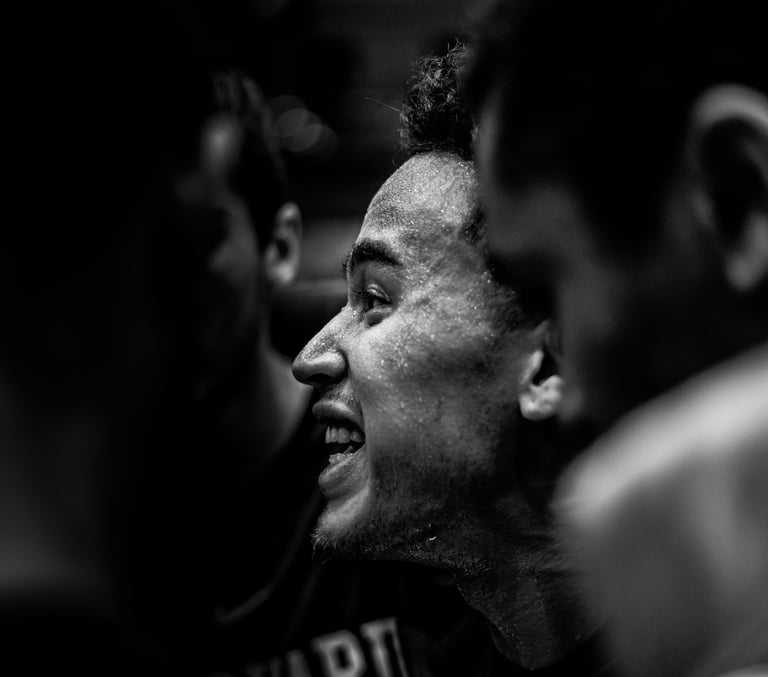Faces in the Crowd: The Art of Finding Solitude in Busy Spaces
Street photography is often associated with bustling city scenes, crowded markets, and the vibrant energy of urban life. But within this chaos, there is an overlooked art: the ability to find solitude, to isolate a single human story amidst the swirl of movement and noise. This delicate balance—capturing quiet moments in busy environments—is what makes street photography so compelling and emotionally resonant.
The Paradox of Solitude in Crowds
Cities are a paradox of anonymity and connection. On the one hand, people are crammed into shared spaces, interacting and brushing past each other constantly. On the other, there’s a profound sense of isolation—people lost in their own thoughts, heads buried in phones, or simply disconnected from the world around them. The skilled street photographer knows how to spot these moments of introspection, even in the busiest of places.
Finding solitude in a crowd is not just about waiting for someone to be alone; it’s about seeing that moment when a person’s inner world breaks through the chaos. It might be the way they pause at a street corner, the distance in their gaze as they navigate through a busy intersection, or the way they retreat into themselves while surrounded by strangers.


Techniques for Capturing Solitude
Framing with the Environment
Another way to emphasise solitude is through framing. Street photographers can use architectural elements, like doorways, windows, or gaps between buildings, to isolate their subjects. This not only creates a visual separation but also emphasises the feeling of being "boxed in" or separate from the world outside. Even in a crowd, these frames can turn the subject into a solitary figure within the chaos.Selective Lighting
Lighting can be a powerful tool in street photography. The play of light and shadow allows photographers to single out individuals, creating a spotlight effect. A shaft of sunlight hitting a lone figure in a busy market or a streetlamp casting light on someone waiting for a bus—these moments draw attention to the solitary subject, amplifying the contrast between them and the crowd.Body Language
Solitude is often communicated through body language. Photographers can capture people lost in thought, looking down, or positioned slightly apart from others. A person sitting on a bench amidst a sea of passersby or standing still in the middle of a busy street creates a visual story of isolation. These moments of stillness amidst movement are where solitude thrives.Patterns and Repetition
Crowded spaces often create visual patterns—rows of people, similar movements, or repeated actions. Finding the one person who breaks that pattern, or who stands out through a difference in posture or direction, creates a powerful sense of isolation. This technique can turn even the most chaotic street into a backdrop for a solitary figure.Depth of Field
Using a shallow depth of field is one way to isolate a subject in a crowded scene. By focusing on a single person and letting the background blur into obscurity, the photographer can create a sense of solitude even in a densely populated area. This technique draws the viewer’s attention directly to the subject’s expression or body language, highlighting their individuality amid the sea of faces.
The Photographer’s Role as an Observer
To capture these moments of solitude, the street photographer must also embody a kind of solitude. Much like the subjects they photograph, photographers often operate as outsiders—observers of life, but not participants in it. This distance allows them to notice what others might overlook: the person standing still while the crowd moves, the quiet face in a sea of expressionless commuters, the lone figure disappearing into the shadows of a busy street.
In many ways, the photographer becomes a mirror to the subjects they capture—both existing on the fringes of the crowd, unnoticed, but fully aware of the beauty in these quiet moments. The photographer’s ability to see and empathise with solitude is what transforms these fleeting glimpses into powerful, lasting images.
The Emotional Impact of Solitude in Busy Spaces
Capturing solitude in a crowd isn't just a technical challenge—it’s an emotional one. These moments resonate because they reflect something universal: the feeling of being alone, even when surrounded by others. In cities, where people live their lives in close proximity to millions, there’s a deep emotional truth in these moments of introspection and separation.
For viewers, these images often evoke feelings of empathy, curiosity, or even melancholy. They invite us to wonder about the subject’s inner world—what are they thinking? Where are they going? Why do they seem so removed from the hustle and bustle around them? These photographs become windows into the quieter, more personal side of urban life.
Conclusion: The Beauty of Solitude in Street Photography
Street photography isn’t just about documenting life as it happens—it’s about finding the stories hidden within the rush of the everyday. By isolating moments of solitude in busy spaces, street photographers create visual poems that speak to the complexity of human emotion and connection. They remind us that, even in a crowded world, there is space for quiet, reflection, and individual stories.
Capturing these moments requires more than just technical skill; it requires empathy, patience, and the ability to see beyond the obvious. In the hands of a skilled photographer, the streets become not just a stage for human activity but a canvas for the rich emotional lives that play out in between the noise.
Copyright © 2025 Peter Pickering. All Rights Reserved. All Wrongs Reversed.
🌐 peterpickering.com | 🎺 sessionsonthegreen.com | 💜 isaacbcole.com | ▶️ YouTube Channel | 🌿 life.peterpickering.com


